- Region
- Águilas
- Alhama de Murcia
- Jumilla
- Lorca
- Los Alcázares
- Mazarrón
- San Javier
-
ALL AREAS & TOWNS
- AREAS
- SOUTH WEST
- MAR MENOR
- MURCIA CITY & CENTRAL
- NORTH & NORTH WEST
- TOWNS
- Abanilla
- Abarán
- Aguilas
- Alamillo
- Alcantarilla
- Aledo
- Alhama de Murcia
- Archena
- Balsicas
- Blanca
- Bolnuevo
- Bullas
- Cañadas del Romero
- Cabo de Palos
- Calasparra
- Camping Bolnuevo
- Campo De Ricote
- Camposol
- Canada De La Lena
- Caravaca de la Cruz
- Cartagena
- Cehegin
- Ceuti
- Cieza
- Condado de Alhama
- Corvera
- Costa Cálida
- Cuevas De Almanzora
- Cuevas de Reyllo
- El Carmoli
- El Mojon
- El Molino (Puerto Lumbreras)
- El Pareton / Cantareros
- El Raso
- El Valle Golf Resort
- Fortuna
- Fuente Alamo
- Hacienda del Alamo Golf Resort
- Hacienda Riquelme Golf Resort
- Isla Plana
- Islas Menores & Mar de Cristal
- Jumilla
- La Azohia
- La Charca
- La Manga Club
- La Manga del Mar Menor
- La Pinilla
- La Puebla
- La Torre
- La Torre Golf Resort
- La Unión
- Las Palas
- Las Ramblas
- Las Ramblas Golf
- Las Torres de Cotillas
- Leiva
- Librilla
- Lo Pagan
- Lo Santiago
- Lorca
- Lorquí
- Los Alcázares
- Los Balcones
- Los Belones
- Los Canovas
- Los Nietos
- Los Perez (Tallante)
- Los Urrutias
- Los Ventorrillos
- Mar De Cristal
- Mar Menor
- Mar Menor Golf Resort
- Mazarrón
- Mazarrón Country Club
- Molina de Segura
- Moratalla
- Mula
- Murcia City
- Murcia Property
- Pareton
- Peraleja Golf Resort
- Perin
- Pilar de la Horadada
- Pinar de Campoverde
- Pinoso
- Playa Honda
- Playa Honda / Playa Paraíso
- Pliego
- Portmán
- Pozo Estrecho
- Puerto de Mazarrón
- Puerto Lumbreras
- Puntas De Calnegre
- Region of Murcia
- Ricote
- Roda Golf Resort
- Roldan
- Roldan and Lo Ferro
- San Javier
- San Pedro del Pinatar
- Santiago de la Ribera
- Sierra Espuña
- Sucina
- Tallante
- Terrazas de la Torre Golf Resort
- Torre Pacheco
- Totana
- What's On Weekly Bulletin
- Yecla


- EDITIONS:
 Spanish News Today
Spanish News Today
 Alicante Today
Alicante Today
 Andalucia Today
Andalucia Today
article_detail
Spanish News Today Editors Roundup Weekly Bulletin July 11

TOP STORY: "Spain wildfire smoke causes mass panic as it covers country" & "Why you really need to get a TIE now"
It’s been a busy week in Spain, with the latest wildfire to hit the country on Monday growing into a big one that’s still not fully out now, nearly a week later. There have also been developments from the Spanish government that concerns anyone who is currently working or hoping to retire one day; an update from the UK government with important information for British residents living in Spain; plus the continuing saga of the month’s biggest story – the tourist rental licence law.
Deep breath, here we go.
Where there’s smoke there’s fire… but not necessarily nearby
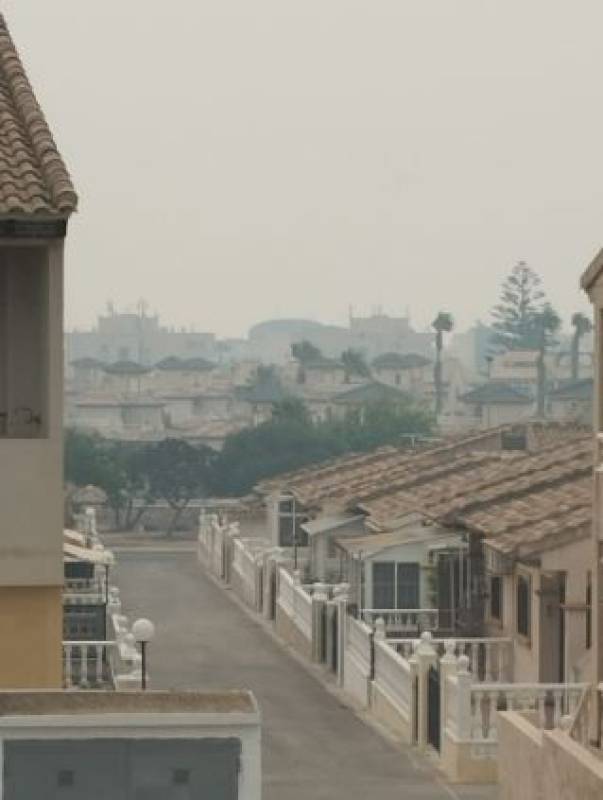 Residents of the southeastern coast of mainland Spain awoke on Tuesday July 8 to a scene straight out of a disaster film, albeit one without an actual disaster. The sky was filled with a thick, smoky haze and the air reeked of burning, sending thousands of people into a minor state of panic. Was there a fire? Should we evacuate?
Residents of the southeastern coast of mainland Spain awoke on Tuesday July 8 to a scene straight out of a disaster film, albeit one without an actual disaster. The sky was filled with a thick, smoky haze and the air reeked of burning, sending thousands of people into a minor state of panic. Was there a fire? Should we evacuate?As it turned out, the smoke wasn’t local at all, though it certainly did a good impression. The culprit lay a whopping 400 kilometres away in Baix Ebre, Catalonia, where a rather more genuine emergency was unfolding. There, a wildfire had sparked near the town of Paüls on Monday morning and, fuelled by fierce winds, had gone postal. By Tuesday, the blaze had consumed more than 2,800 hectares of land and sent smoke billowing far beyond the borders of Tarragona.
So, while the likes of Alicante and Murcia weren’t directly in harm’s way, the alarming smoky smell caused enough concern for local authorities to spring into action with clarifying announcements. Councils in Murcia, Lorca and beyond issued health advisories, telling residents to stay indoors and avoid strenuous activity due to the compromised air quality.
Adding insult to injury, or at least haze to havoc, a fresh wave of calima – that lovely Saharan dust we all know and loathe – mixed with the smoke that day, reducing the air quality even further.
The real danger, of course, was up in Tarragona, where firefighters – backed by the Military Emergency Unit – battled bravely to prevent the flames from spreading. It took until nearly 11pm on Thursday, nearly four full days after the fire started, for fire crews to declare the blaze ‘under control’ (which doesn’t mean the same as extinguished, mind you. It just means it has stopped spreading to new areas).
The fire burnt through no fewer than 3,321 hectares of land, and firefighters will continue to work to put out the flames entirely this weekend. One person from the Active Forest Prevention Team (EPAF) died after falling down a slope while carrying out extinguishing tasks in a steep area.
Down south, the smoke covering the sky had cleared by Wednesday morning, but there was a genuine fire in the local area, although on a much smaller scale. This was on the Camposol urbanisation, behind the golf club on Sector C, when the green waste dump went up in flames.
Plumes of black smoke could be seen billowing from the site, and there was alarm as the fire cut the power. Fortunately, the fire brigade responded quickly and had the situation under control within a few hours. No one was harmed.

The bigger issue, however, is one that residents have been banging on about for years: these garden waste dumps, which have the uncanny habit of attracting vermin and catching on fire. This is not the first time these out-of-control dumping areas have caught light, and while the exact cause of this particular fire is not yet known, what is clear is that someone needs to act fast to sort it out.
The Town Council of Mazarrón, whose jurisdiction Camposol falls under, has promised, once again, to sort the problem with the help of CCTV and new signs that tell people not to dump shards of glass and broken sofas in there.
In the end, one tiny silver lining to the black smoke cloud is that the green waste dump on Sector C now contains rather less green waste than it did a few days ago, and what’s left is pleasantly damp and unlikely to catch fire again any time soon. Unfortunately, the same cannot be said for other dumps across Camposol, which remain, for now, ticking compost time bombs.
What this week’s events have reminded us is of the recurring danger of wildfires in Spain each summer. It’s no joke. People die because of this each year. Remember to remain vigilant and follow any instructions from emergency services, should the need arise.
Why you really need to get a TIE now
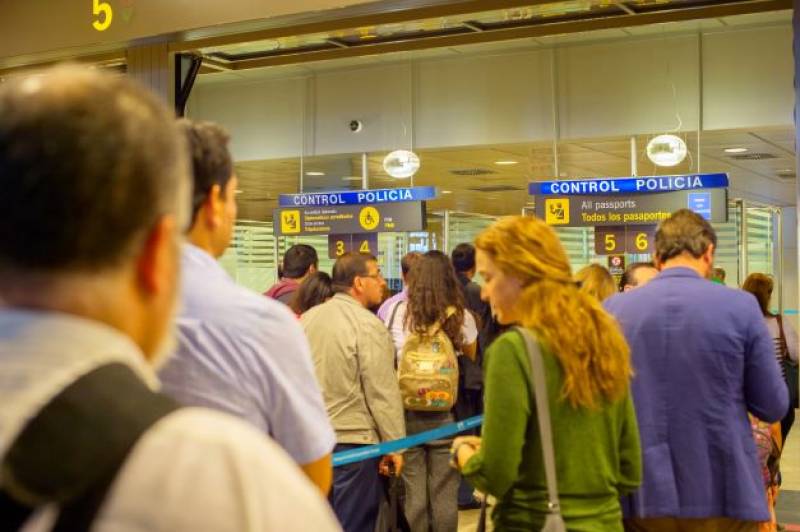
If there’s one thing the British expat in Spain loves more than a decent cuppa and complaining about the heat, it’s not dealing with Spanish bureaucracy. Unfortunately, a bit of red tape has once again reared its head, or rather, been updated, and this time it involves something far more threatening than an empty tin of PG Tips: passport queues.
On Tuesday, as everyone else was looking to the skies in distress, the UK government quietly tweaked its ‘Living in Spain’ guidance webpage to include a crucial update. Buried beneath the usual advice on registering residency and getting yourself on the local padrón lies the rather important detail that the old green residency certificate will not save Brits resident in Spain from additional passport controls due to the upcoming EES.
You will remember that the EU is rolling out its new Entry-Exit System (EES) before the end of 2025. The implementation has already been pushed back by a couple of years, but this time it looks as if they might really mean it. This high-tech border control regime will require all non-EU nationals crossing into the Schengen zone to register biometric data, scan documents and generally be treated to the sort of scrutiny that used to be reserved for mystery liquids in airport security.
The good news is that any non-EU citizen living in Spain as a full-time resident who has a Tarjeta de Identidad de Extranjero (TIE) card will be exempt from all of that. Anyone still clinging onto their crumpled green certificate will not.
That’s why Brits in Spain are being urged once again by the UK Embassy in Spain to swap their ancient green residency certificates, which resemble something knocked up on a 90s printer and are as laughably flimsy as it’s possible to make a proof-of-residency document that is a legal requirement to carry on one’s person at all times.
It’s not clear yet, but those who have a green cert instead of a TIE may also be asked to fork out €7 every three years just to enter Spain once the follow-up visa waiver system, ETIAS, kicks in, even if they already live here. Meanwhile, anyone with a TIE will breeze through passport control and be lucky enough to stand and wait at the baggage carrousel earlier than anyone else.
Some people have resisted the TIE switch on principle, suspicious that it’s all part of a global plot to track their movements, despite freely documenting every tapas lunch on Facebook. Others would happily upgrade if only they could get an appointment at the notoriously elusive Extranjería office, where booking an appointment is more competitive than a Wimbledon final.
Still, the reasons for trying, once more, to change to the sleeker, more modern TIE if you haven’t done so already probably outweigh the potential for troublesome hours spent on the Extranjería website or the chance that more of your data will be in the hands of the ‘man’ than they already have with your passport, bank accounts, email passwords, listening to your phone conversations…
Which way to vote in the EGM
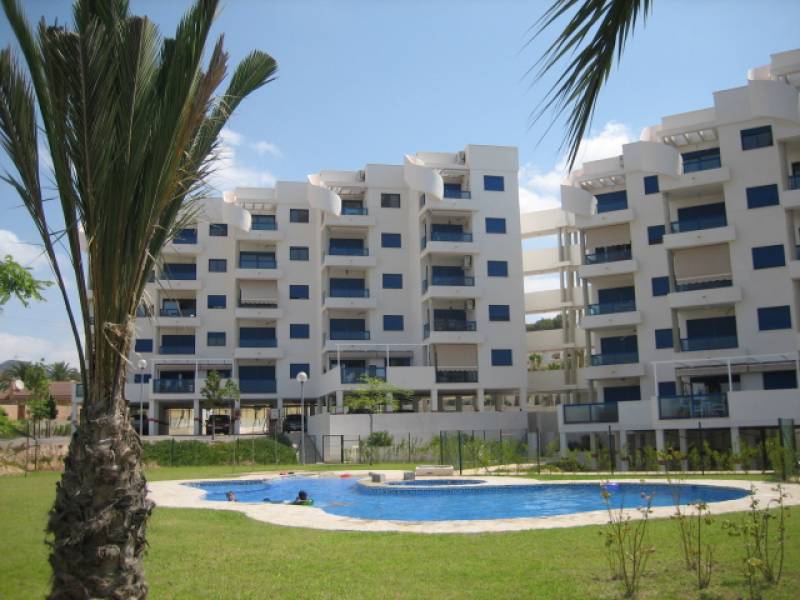
If your building’s WhatsApp group has suddenly come alive with chatter about EGMs, short-term lets and new laws, it may be time to sit up and take note. We’ve written before about Spain’s latest twist in the housing saga, with a new law having come into force this month that allows comunidades de propietarios to vote on whether to ban or permit new tourist rental licences in their developments. But knowing whether to vote for or against this ban is no easy task.
Anyone who wants to legally rent out their property on a short-term basis must register their intention to do so. It’s basically a way that the taxman can keep tabs on income. And it’s this that the new law is regulating.
It’s worth repeating that this new rule doesn’t boot out existing tourist flats; those with valid licences can continue to rent out their homes to holidaymakers. But for anyone aspiring to buy a house in Spain and justify the expense by renting it out for 9 months of the year, they may soon find themselves politely declined by their neighbours.
Tourist rentals are booming across Spain, particularly in sun-drenched holiday spots like Andalucía, Valencia and the Canary Islands. In fact, over 380,000 such properties are registered nationally because they are such a profit-turner, and while visitors might love them for being an affordable alternative to hotels, locals living in Spain are increasingly feeling the pinch, particularly when it comes to finding affordable homes… or just getting a decent night’s kip in July and August!
In short, the government’s new law aims to curb speculative buying and help young people and those with lower incomes get onto the property ladder without needing to inherit a fortune from a wealthy boomer. However, not wanting to get their feet wet too much, they’ve passed the buck over to individual communities to decide on whether or not they wish to continue granting new tourist rental licences and under what conditions.
For many homeowners, though, particularly part-timers, this vote presents a conundrum. Renting out their Spanish bolthole for a few weeks each year helps cover the bills and gives the place a sense of purpose outside summer holidays. Remove that option, and some may be forced to sell or leave their properties empty, which is not exactly conducive for a thriving local economy.
Bars, golf clubs, hairdresser’s and more thrive on seasonal spenders, not just the year-round residents who may only eat out once a week. The argument goes that, whilst fewer tourists means quieter streets and less loutish behaviour, it would also lead to local businesses struggling to make ends meet, not to mention rising community fees in blocks where fewer owners shoulder the communal costs.
On the other hand, for full-time residents who have had enough of late-night rabble rousing outside their window, the appeal of a ban is understandable. Less noise, fewer broken tiles, more familiar faces and a fighting chance of knowing who’s who down at the pool. Security improves, maintenance costs drop and a return of that old-school neighbourly spirit.
In the end, each building will have to chart its own course through this brave new world with a simple majority vote. Some may go full ban, others might impose conditions like minimum stays, limits of the number of licences granted or extra community fees payable by those who want to rent out.
Whichever way it goes, the decision is far from trivial. It could shape not just the community’s atmosphere but also your bank balance and resale prospects. Whichever side of the fence you lean on, look carefully into what it would mean for your particular local circumstances and be sure to find out if and when an EGM will be held for your community, and how you can vote online or by proxy if you have to.
Retirement is no jubilation

The average salary in Spain has never had people rushing out to buy that sports car anytime soon, so the news that pay packets will shrink a little in 2026 probably won’t go down too well. The cut isn’t huge, but it will affect almost everyone who’s working.
It’s all part of a government plan called the Intergenerational Equity Mechanism, which was introduced back in 2023 to help shore up the country’s pension system.
From January 2026, a bit more will be taken out of salaries each month to build up the Social Security reserve fund. It’s a way to prepare for the retirement of millions of baby boomers, those born between 1958 and 1978, whose pensions will put a serious strain on the system when they take retirement, or ‘jubilación’ as it’s known in Spain.
The idea is to spread the cost across the working population by asking for a little more from everyone now. The deduction in 2026 will be 0.9%, but that’s not all coming from you. Your employer will pay 0.75% and you’ll cover the remaining 0.15%.
So it’s not exactly a fortune but that rate will go up over the next few years and by 2030 it will be split evenly at 0.6% each. It might only be a few euros a month per person, but across the country it adds up to billions going into the pension fund.
But the worst part is even though you are paying more, that extra money doesn’t count towards your own pension. It goes into a general pot and won’t boost your retirement income later on. Unless you’ve already reached retirement age and decided to keep working, you will still have to contribute.
The government says this is all about long term stability, but not everyone is convinced. Some are calling for clearer information or even tax incentives to balance things out. For now though, the plan is moving ahead and the deductions will quietly grow in the background.
But the Spanish government doesn’t just want us to pay more into the system now, it also wants us to stick around a bit longer. The powers that be are putting a lot of energy into changing how we think about retirement, with a wave of new reforms aimed at making later-life work a bit more appealing.
It’s no secret that the state pension fund is under strain, so the longer people stay in the workforce, the better it is for the system. One of the latest ideas on the table is something called ‘reversible retirement’. If it goes ahead, it would let people who’ve already retired return to paid work without losing out in the way they do under the current setup.
Right now, there’s a flexible retirement option, but it’s not as flexible as it sounds. Retirees who take on part-time work lose a chunk of their pension in proportion to the hours they work, which has made it a pretty unpopular choice.
The new approach is meant to fix that. The idea is to offer a smoother and more gradual path out of working life, rather than the sudden stop most people face now.
The reform is still in its early days and it will be a while before anything changes, but it’s clear the goal is to rethink what retirement looks like in Spain. Instead of closing the door completely, the government wants to leave it open just a crack for those who might want to step back in.
Murcia
Paul and Julie, an intrepid duo from Los Alcázares, have returned home to Spain triumphantly having completed an ambitious charity scooter ride across 3,500km of Europe to reach Scotland and back again. That’s roughly the same distance as driving from Murcia to Moscow, although we doubt Putin would be as pleased to see them as the locals of Los Alcázares were.
On the back of a 51-year-old Lambretta lovingly dubbed ‘The Rat’, Julie and Paul pootled their way on a 200cc engine all the way up to Ayr and back, raising over €17,000 for Blind Veterans UK and Jigsaw Children’s Hospice in Cumbria on the way.
They spent €265 on petrol and €1,800 on ferry crossings, which may sound like a lot, but for that price they got a scooter adventure, a sense of personal triumph and two very excited dogs, Hugo and Bentley, waiting at the kennels.
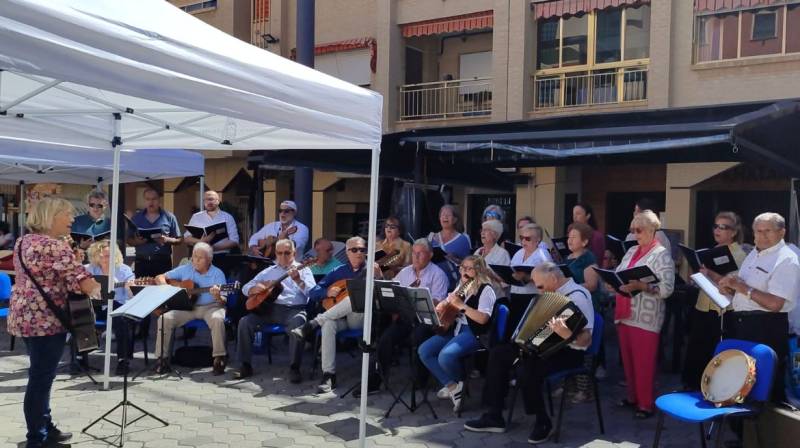 Los Alcázares has also been busy hosting the first ever International Senior Fair, where, instead of scooters, the stars were wheelchairs, walking frames and rather a lot of wisdom.
Los Alcázares has also been busy hosting the first ever International Senior Fair, where, instead of scooters, the stars were wheelchairs, walking frames and rather a lot of wisdom.Held over three days, the event drew care professionals, companies and expat families together for a gentle celebration of later life, complete with talks, a very popular tapas route and, presumably, the odd bit of reminiscing about the good old days when jellyfish were just things you saw on Blue Planet.
There was also dancing and music, as there should be at any good Spanish festival, and the whole event should be repeated on an even bigger scale next year, so if you missed it there is hopefully another chance.
One less welcome occurrence that has returned to the Mar Menor area are illegal boat parties, despite police stepping up their awareness campaign. More than 30 fines were handed out in one day alone, mostly for unsanctioned partying on the protected Isla Ciervo.
Part of the problem is the proliferation of jet skis, which anyone over 18 can get a licence to pilot in under six hours. That’s barely enough time to read the manual, let alone understand where not to drive the thing. The idea of setting up a permanent guard post is now being floated… unlike many of the rules, which seem to have sunk without trace.
Not only that, but the jellyfish have also decided to make a return to the Mar Menor. After a relatively quiet spring, the Mar Menor’s waters are heating up, and so is jellyfish activity. The scientists who have the unenviable job of counting the little stingers have noted a surge in the jellyfish population, fuelled by the recent rise in water temperature.
Anti-jellyfish nets are being installed at four key beaches: Villananitos, Lo Pagán, Veneziola and El Pantalán. The nets, which act sort of like hairnets for the sea, are designed to stop jellyfish from drifting into swimming zones near the shore. Last year they were late in going up, and bathers suffered the consequences, so this year the authorities are jumping in early.
Of course, not all visitors to Murcia this summer have been quite so unwelcome. None other than Íker Casillas, World Cup hero and former Real Madrid goalkeeper, popped up in La Azohía recently, casually soaking up the sunset.
With over 20 million Instagram followers, the snap he posted with Isla Plana in the background and the caption “Que hermosa eres!”, praising the area’s beauty, has possibly done more for the Region’s image among Gen Z than any tourism slogan ever could.
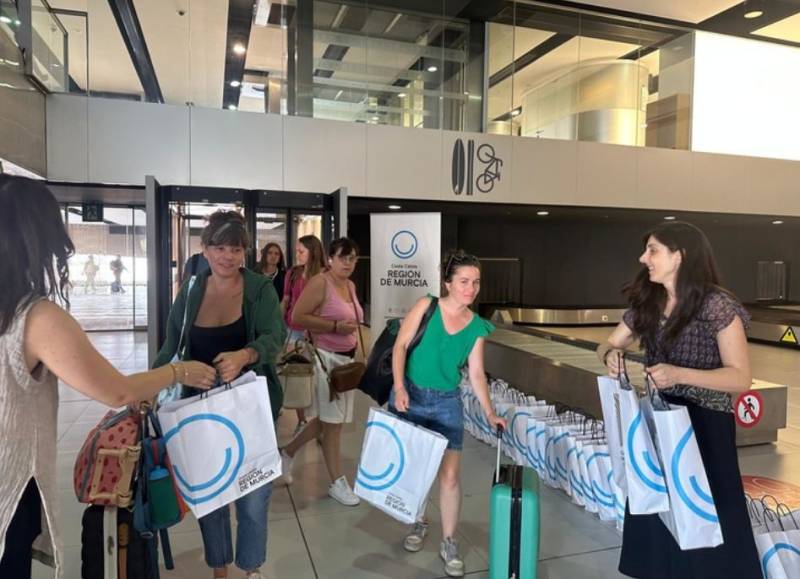 Also getting a grand welcome were the more than 100 passengers on board the first direct flight from Marseille to Corvera Airport this week. Operated by Volotea, the route is running until late August, connecting the Region of Murcia with southeastern France.
Also getting a grand welcome were the more than 100 passengers on board the first direct flight from Marseille to Corvera Airport this week. Operated by Volotea, the route is running until late August, connecting the Region of Murcia with southeastern France.Those stepping off the inaugural flight this Monday were surprised to receive gift bags from enthusiastic tourist industry staff and to be snapped by an official photographer as they disembarked.
As well as handing out tote bags, the Regional Ministry of Tourism has also planned a series of promotional initiatives throughout the year aimed at reinforcing Murcia’s profile in France and encouraging continued tourism growth from the French market. You never know, in just 10 short years, that Marseille route might become a year-round staple. We can but dream.
Coming up soon in Murcia, there is a weird-but-fun-looking Spanish/South Korean mashup tapas route happening in Cartagena from July 12 to 17, plus a summer carnival in Los Narejos on Sunday, a free light jazz concert at the Hotel Balneario de la Encarnación in Los ALcázares next Tuesday and a guided hike in the countryside around Mazarrón on the same day. There is also still time to buy tickets to see Sir Tom Jones live in concert in August!
For other things going on in the Region of Murcia this weekend and beyond, remember you can always see our EVENTS DIARY:
Spain
Worrying economic data from Spain show that, with the cost of living in Spain still climbing much faster than wages, more and more people are relying on credit just to get through the month.
Debt levels are rising at a pace not seen since before the 2008 crash, but most households aren’t blowing the budget on luxuries. In May alone, banks handed out close to €3.9 billion in credit for necessities like home appliances and services. That’s a 15% jump from the same time last year and marks a new high for consumer credit.
So far this year, Spanish households have taken out almost €18 billion in consumer loans, up nearly 17% on the same five-month stretch in 2024. With unemployment staying relatively low and the economy looking fairly stable, banks seem more willing to approve credit.
A recent survey found that around 34% of people were planning to apply for a consumer or home improvement loan, the highest figure since they started tracking in 2018. Other reports show strong interest in spending on holidays, electronics, home goods and sports – all the usual suspects when it comes to financing.
And of course, cars still top the list as the number one reason people take out instalment loans.
These small loans are often easy to get, covering amounts between €200 and €75,000, but they come at a price. In May, the average interest rate was 6.97% and has been holding steady for months.
The summer travel season hasn’t exactly kicked off smoothly in 2025. Strikes by air traffic controllers in France have caused disruptions across Europe and here in Spain, recent power outages and IT glitches have delayed trains and grounded flights.
There’s nothing quite as frustrating as booking a long-awaited break, using up your annual leave and then watching your flight get cancelled.
With all of that in mind, have you ever wondered if some airlines are worse than others when it comes to derailing your travel plans? The team at Flightright, a passenger rights website, decided to find out by digging into last summer’s flight data. Their findings might surprise you.
Looking at the top 20 airlines flying out of Spain between May and August 2024, British Airways came out with the highest cancellation rate, axing 3.96% of its scheduled flights. That was well ahead of easyJet at 1.58% and Eurowings at 1.50%.

On the flip side, SwiftAir, Transavia.com and CanaryFly didn’t cancel a single flight from Spain during the entire summer.
Other major players landed somewhere in the middle. Vueling had a cancellation rate of 0.95%, Ryanair 0.16%, Air Europa Express 0.12%, Air Europa 0.07%, Iberia 0.03%, Volotea 0.02% and Iberia Express 0.01%.
Delays were also a problem, and once again British Airways topped that list. Nearly half of its flights (46.26%) left later than scheduled. EasyJet wasn’t far behind at 41.57%, followed by Transavia.com at 39.03%.
The most punctual airlines last summer were TUI Airways at 1.58%, SwiftAir at 1.89% and Volotea at 7.17%.
So what about 2025?
The summer is still young, so there isn’t a huge amount of data to go on yet, but Flightright has already crunched some early numbers. So far this year, Finnair leads the European cancellation chart with 3.35%, followed by KLM with 2.04% and British Airways with 1.58%.
On the more reliable end of the list, ITA Airways and Turkish Airlines have barely recorded any cancellations at all, with rates of 0% and 0.01% respectively. Iberia is also off to a solid start, having cancelled just 12 flights so far this year, also amounting to 0.01% of its schedule.
Alicante
Almost a month after a young Irishman was seriously injured in a violent attack in La Zenia, police have arrested a 58-year-old man, also Irish, suspected of his attempted murder.
The incident happened in the early hours of June 15, when the 28-year-old victim was found bleeding heavily from a neck wound on a quiet street near Zenia Boulevard. He had been stabbed with a box cutter and was rushed to Torrevieja University Hospital, where emergency surgery saved his life.
 At first, the victim admitted he knew the attacker but was too afraid to say more. Later, however, he identified the suspect, who had fled his home by then. After a thorough investigation, Orihuela Costa Local Police caught up with the man in a local park on June 30 and arrested him.
At first, the victim admitted he knew the attacker but was too afraid to say more. Later, however, he identified the suspect, who had fled his home by then. After a thorough investigation, Orihuela Costa Local Police caught up with the man in a local park on June 30 and arrested him.Since the suspect had no ID on him, police worked closely with Irish authorities, who helped confirm his identity through fingerprints. It turns out he has a long criminal record back in Ireland for serious offences, including homicide and drug trafficking.
Somewhat incredibly, even though he’s now been charged with attempted murder by the Spanish court, the accused has been released on bail, albeit with a restraining order preventing him from contacting the victim.
While that case was unfolding in Orihuela Costa, another issue has once again been making headlines across the wider Vega Baja region: recycling.
It seems many towns in the area are really struggling with separating their waste properly. Official figures show very little cardboard, paper, plastic containers, cans or cartons are making it to recycling centres and organic waste, which makes up almost half of a typical rubbish bag, is barely being processed.
With more than 386,000 people producing around 192,000 tonnes of household waste every year, the amount of organic waste recycled is tiny by comparison.
But it’s not exactly easy to go green when we’re dealing with a waste collection service that has been getting worse every year. Orihuela Costa, in particular, is feeling the strain. Residents are urged to separate their rubbish, but there simply aren’t enough bins for general waste, let alone for plastics, glass, cardboard or organic matter.
Most of the existing bins are damaged or unusable and on top of that, fees for waste collection have increased sharply this year. The good news is the City Council recently bought 758 new containers, which are already being installed to ease the problem.
Some towns are doing better than others. Guardamar del Segura, with just over 17,000 residents, leads the way by recycling well above the national average. Pilar de la Horadada also stands out for offering plenty of recycling points. On the other hand, places like Callosa de Segura and Cox have very low recycling rates.
The biggest cities, Torrevieja and Orihuela, hover around the regional average, which is still considered poor given they produce half the waste in the area.
Local councillors say these numbers highlight the urgent need for a regional treatment plant to help meet environmental laws and move towards a circular economy.
 On a brighter note, summer visitors and locals alike can enjoy the return of the popular Orihuela Costa tourist train. Running from Campoamor to Playa Flamenca and back, this open-sided road train is a relaxing and easy way to see the best beaches, shopping spots and seafront views without worrying about driving or parking.
On a brighter note, summer visitors and locals alike can enjoy the return of the popular Orihuela Costa tourist train. Running from Campoamor to Playa Flamenca and back, this open-sided road train is a relaxing and easy way to see the best beaches, shopping spots and seafront views without worrying about driving or parking.It first launched in 2018 and quickly became a hit, so it’s great to see it back for July and August.
The train connects key destinations like Playa Flamenca beach, Zenia Boulevard, La Zenia beach and Playa de la Glea in Campoamor. Tickets cost just €6 per person and allow unlimited travel throughout the day. The full round trip takes less than an hour, making it ideal for families or anyone who wants to explore at a relaxed pace.
The train runs Monday to Friday with departures from Campoamor at 11am, 1pm, 4pm and 6pm.
Return trips from Playa Flamenca leave at 12pm, 2pm, 5pm and 7pm.
For more details, check out the official Facebook page of Orihuela Tren Turístico.
For other events and activities happening in the area, check out the What’s On page of Alicante Today or join the Costa Blanca What’s On and Where to Go Facebook group
Andalucía
One British woman is warning others not to buy property in Spain after squatters took over her home in Cártama, Málaga, leaving her more than €100,000 out of pocket.
Louise, who inherited the two-bedroom house from her father and had been renovating it, says the nightmare began when squatters broke in during February 2023. Despite hiring private companies, working with lawyers and even appealing to the Guardia Civil, she claims the system repeatedly failed to protect her rights as a homeowner.
Although the first group of squatters were eventually evicted in September 2024 for drug-related offences, the house was reoccupied just hours later. The police, she says, believed the new intruders' claim that they had been living there for two years. “They believed them more than us and our real estate agent,” Louise said.
Since then, she has spent over €20,000 on legal fees, accommodation and flights. She also lost tools, solar panels and vehicles worth tens of thousands more. Now, the house is on the market for a fraction of its original value – squatters included.
She has this blunt warning for other would-be buyers: “Do not buy homes in Spain, the law is on their side.” Her only advice? Never leave a property vacant, install a monitored alarm and take out specialist insurance.
From coastal housing headaches to coastal hazards, beachgoers in Huelva got a fright last week when a freak wave rolled into Mazagón beach and knocked people clean off their feet.
The wave, which was strong enough to snap umbrellas and sweep swimmers into rocks, is now believed to have been caused by the manoeuvres of a massive 60,000-tonne cargo ship leaving the port nearby.
At least six people were hurt and one woman hospitalised. Rocío, 28, suffered a broken foot and now faces surgery and weeks of recovery. “It’s the last thing I wanted at the start of the summer,” she told reporters. Eyewitnesses described people being tossed about the beach and crashing into rocks as the surge came in from the side.
An investigation has been launched to check whether the ship broke any safety rules, and new limits have already been put in place to stop something like this happening again. Cargo vessels in the area must now reduce their speed to 11.5 knots when near the shore.
Officials are also reminding swimmers to stay aware of their surroundings, especially when close to busy ports or shipping lanes. While freak waves are rare, they can happen when large vessels pass too close to shore. With the beaches filling up fast this summer, safety advice is being reinforced through signage and lifeguard patrols.
If all this has left you dreaming of somewhere calm and leafy, Seville has good news. The city’s latest urban green space is almost ready. Cruz del Campo Park, set on the site of the old Cruzcampo brewery, brings seven hectares of new parkland to the neighbourhoods of Nervión and San Pablo.
Due to open in the coming weeks, the park promises shaded paths, wide lawns and something for all ages. There will be 950 trees, two sports courts, a one-kilometre jogging path and a huge kids’ play area, complete with climbing frame and zip line. The new park is part of a larger redevelopment that will also include more than 2,000 new homes, around half of them classed as social housing.
As well as offering a place to relax, the green space is expected to become a focal point for the local community, helping improve air quality and providing opportunities for exercise and outdoor socialising. Urban planners hope that this model can be replicated in other parts of the city.
Mayor José Luis Sanz called the project “one of the priorities and objectives of this government team,” and said it would offer better air quality, more space to relax, and a welcome boost to the quality of life in the city. Just the kind of space we could all make the most of on a warm summer afternoon… wherever we happen to call home.

You may have missed…
- Pre-paid vs insurance funeral plans: Which is best for expats in Spain?
Moving to Spain offers many rewards, from warmer weather and relaxed living to lower costs and better healthcare. But for many expats, planning for end-of-life arrangements is something that gets postponed. Understanding the difference between pre-paid funeral plans and funeral insurance is crucial, especially in a country where funerals usually take place within 24 to 48 hours of death. - If you’ve got this blood type, ticks might love you more than others.
If you’ve ever wondered why you always seem to be the one getting bitten on a walk through the woods, your blood might be to blame... - Stay cool and save money: Adiabatic cooling pros and cons, and an alternative that works for Spanish coastal homes.
Adiabatic air conditioning has become a popular option for many homeowners in Spain as it evaporates water in the air to cool it down, but while it has its advantages, but it isn't always enough... especially in more humid coastal areas like Murcia and Alicante, where alternative cooling solutions work better. - Spain sees surge in animal-related road accidents.
Traffic accidents involving animals have doubled in Spain over the last decade, with more than 36,000 incidents reported last year, according to new figures released by the DGT. - Two UK airports scrap the 100ml liquid rule.
Nineteen years after it was first introduced, the strict 100ml liquid rule for hand luggage has finally been lifted at two major UK airports, including one that has year-round flights to Murcia’s Corvera Airport...
And there we have it for this week. It was a mega one! Cheers for reading, as always, and we’ll be back with another for you next week.
See ya then!
Contact Murcia Today: Editorial 000 000 000 /
Office 000 000 000
















